42 respiratory system with labels and functions
› heart › picture-of-the-heartPicture of the Heart - WebMD The heart pumps blood through the network of arteries and veins called the cardiovascular system. The heart has four chambers: The right atrium receives blood from the veins and pumps it to the ... en.wikipedia.org › wiki › NicotineNicotine - Wikipedia Immune system. Immune cells of both the Innate immune system and adaptive immune systems frequently express the α2, α5, α6, α7, α9, and α10 subunits of nicotinic acetylcholine receptors. Evidence suggests that nicotinic receptors which contain these subunits are involved in the regulation of immune function. Optopharmacology
Respiratory System: Function & Physiology - Study.com The respiratory system is responsible for the movement of air and the exchange of gases in the body. Learn more about the functions and physiology of the respiratory system and explore the process ...
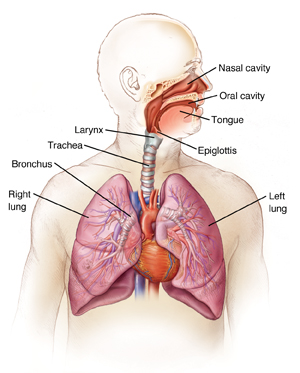
Respiratory system with labels and functions
Physiology, Lung - StatPearls - NCBI Bookshelf The lungs are the foundational organs of the respiratory system, whose most basic function is to facilitate gas exchange from the environment into the bloodstream. Oxygen gets transported through the alveoli into the capillary network, where it can enter the arterial system, ultimately to perfuse tissue. The respiratory system is composed primarily of the nose, oropharynx, larynx, trachea ... Respiratory System | Respiratory System Diagram Drawing With Label The. respiratory system provides oxygen to the body's cells while removing carbon dioxide, a. waste product that can be lethal if allowed to accumulate. There are 3 major parts of the. respiratory system: the airway, the lungs, and the muscles of respiration. The airway, which includes the nose, mouth, pharynx, larynx, trachea, bronchi, and ... Respiratory System Review with Practice Questions (2022) The respiratory system is a term that describes the biological structures of the human body that are involved in gas exchange. Gas exchange is the physiological process of diffusion where oxygen moves from the lungs to the bloodstream during inhalation, and carbon dioxide moves from the blood to the lungs for removal during exhalation.
Respiratory system with labels and functions. How do you draw and label the parts of the respiratory system? The respiratory system is the network of organs and tissues that help you breathe. It includes your airways, lungs and blood vessels. The muscles that power your lungs are also part of the respiratory system. These parts work together to move oxygen throughout the body and clean out waste gases like carbon dioxide. Respiratory system: Anatomy and functions | Kenhub Respiratory system (Systema respiratorum) The respiratory system, also called the pulmonary system, consists of several organs that function as a whole to oxygenate the body through the process of respiration (breathing).This process involves inhaling air and conducting it to the lungs where gas exchange occurs, in which oxygen is extracted from the air, and carbon dioxide expelled from the body. Free Respiratory System Worksheets and Printables - Homeschool Giveaways We have created the Human Body Systems Labeling and Diagramming Worksheet as an instant download for your children. This respiratory system packet includes a fill in the blank diagram to fill in the trachea, bronchi, lungs, and larynx. Respiratory System Diagram - Download this free color diagram of the respiratory system for your kids. histology.siu.edu › intro › ctHistology at SIU, connective tissue The obsolete term reticuloendothelial system refers to the macrophages of the liver, spleen and lymph nodes (i.e., those organs with elaborate endothelially-lined channels supported by reticular connective tissue). The name reflects former confusion about the distinction between endothelial cells and the scattered population of macrophages ...
en.wikipedia.org › wiki › Central_nervous_systemCentral nervous system - Wikipedia The central nervous system (CNS) is the part of the nervous system consisting primarily of the brain and spinal cord.The CNS is so named because the brain integrates the received information and coordinates and influences the activity of all parts of the bodies of bilaterally symmetric and triploblastic animals—that is, all multicellular animals except sponges and diploblasts. Respiratory system quizzes and labeled diagrams | Kenhub With a labeled diagram, you can see all of the main structures of an organ system together on one page - great for helping you to memorise the appearance of several structures and their relations. Unlabeled diagrams can then help you to put your memory to the test. Below, you'll find the respiratory system labeled and unlabeled on two ... Cilia in the Respiratory System Overview & Function | What are ... The respiratory system's primary function of breathing, works by creating a circumstance in which the air outside the body pushes into, and fills, the lungs. This is done with the help of some ... Lymphatic System: Diagram, Function, Anatomy, Diseases - Verywell Health The lymphatic system involves many organs, including the tonsils, adenoids, spleen, and thymus. Lymph nodes filter out bacteria and cancer cells and create white blood cells to fight infection. These nodes are found throughout the body (neck, armpits, groin, chest, and abdomen). 1. This article explains the function of the lymphatic system ...
The Respiratory System - Diagram, Structure & Function - TeachPE.com The Respiratory System. March 24, 2021. The function of the human respiratory system is to transport air into the lungs and to facilitate the diffusion of oxygen into the bloodstream. It also receives waste Carbon Dioxide from the blood and exhales it. Here we explain the anatomy of the airways and how oxygen gets into the blood. Advertisements. lpi.oregonstate.edu › mic › vitaminsVitamin A | Linus Pauling Institute | Oregon State University Feb 25, 2021 · Vitamin A has important roles in embryonic development, organ formation during fetal development, normal immune functions, and eye development and vision. (More information) Vitamin A deficiency is a major cause of preventable blindness in the world. It is most prevalent among children and women of childbearing age. Respiratory System Organs and Their Functions - New Health Advisor The three major parts of the respiratory system all work together to carry out their task. The airways (nose, mouth, pharynx, larynx etc.) allow air to enter the body and into the lungs. The lungs work to pass oxygen into the body, whilst removing carbon dioxide from the body. The muscles of respiration, such as the diaphragm, work in unison to ... How the Lungs Work - The Respiratory System | NHLBI, NIH The circulatory system helps deliver nutrients and oxygen from the lungs to tissues and organs throughout the body. It also helps remove carbon dioxide and waste products. Other body systems that work with the respiratory system include the nervous system, lymphatic system, and immune system.
› health › topicsEndocrine Disruptors - National Institute of Environmental ... NTP scientists collaborate with researchers from the U.S. Environmental Protection Agency (EPA) to develop and validate integrated, high throughput testing strategies to detect substances that could disrupt endocrine functions by interacting with the hormones estrogen and androgen. In addition, they created a comprehensive database from ...
Lung Function: Anatomy, Role, and Lung Health - Verywell Health The lungs play an important part in the respiratory system. Their main function is to provide oxygen to the blood and remove carbon dioxide from the blood. Various diseases can affect the lungs, including asthma, infections, COPD, and cancer. Keep the lungs healthy by avoiding pollutants, getting regular exercise, and ceasing smoking.
Respiratory System: TEAS - Registered nursing The upper respiratory system: The part of the respiratory system that includes the nose and nares, also referred to as the nostrils, the pharynx, and the larynx. The lower respiratory system: The part of the respiratory system that includes the trachea, the bronchi, the bronchioles, the lungs, and the alveoli. Pharynx: The pharynx is the part ...
human respiratory system | Description, Parts, Function, & Facts human respiratory system, the system in humans that takes up oxygen and expels carbon dioxide. The human gas-exchanging organ, the lung, is located in the thorax, where its delicate tissues are protected by the bony and muscular thoracic cage. The lung provides the tissues of the human body with a continuous flow of oxygen and clears the blood of the gaseous waste product, carbon dioxide ...
› createJoin LiveJournal Password requirements: 6 to 30 characters long; ASCII characters only (characters found on a standard US keyboard); must contain at least 4 different symbols;
Respiratory System (Theory) : Rodent Anatomy : Biotechnology and ... Its functions include air conduction, gas exchange, olfaction (reception of odor) and phonation (production of sound). A pair of lungs is enclosed in the thoracic cavity. The ventilating system consists of the thoracic cage and intercostals muscles, diaphragm, and elastic connecting tissue of the lung which move air within the respiratory tract.
Histology, Respiratory Epithelium - StatPearls - NCBI Bookshelf The division of the respiratory system into conducting and respiratory airways delineates their function and roles. The conducting portion, consisting of the nose, pharynx, larynx, trachea, bronchi, and bronchioles, which all serve to humidify, warm, filter air. The respiratory portion is involved in gas exchange. There are three major types of ...
Respiratory System Quiz: Questions With Answers - ProProfs 4. 5. Small spaces in the skull thought to regulate the temperature and humidity of the air taken into the body. 6. 7. This tube carries air down to the windpipe. 8. 9. A flap over the trachea that keeps out food and anything else that could clog the trachea.
Carefully study the diagram of the human respiratory system with labels ... Carefully study the diagram of the human respiratory system with labels A, B, C and D. Select the option which gives correct identification and main function and /or characteristic. A. (i) Trachea: It is supported by bony rings for conducting inspired air. B. (ii) Ribs: When we breathe out, ribs are lifted.
Respiratory System Review with Practice Questions (2022) The respiratory system is a term that describes the biological structures of the human body that are involved in gas exchange. Gas exchange is the physiological process of diffusion where oxygen moves from the lungs to the bloodstream during inhalation, and carbon dioxide moves from the blood to the lungs for removal during exhalation.
Respiratory System | Respiratory System Diagram Drawing With Label The. respiratory system provides oxygen to the body's cells while removing carbon dioxide, a. waste product that can be lethal if allowed to accumulate. There are 3 major parts of the. respiratory system: the airway, the lungs, and the muscles of respiration. The airway, which includes the nose, mouth, pharynx, larynx, trachea, bronchi, and ...
Physiology, Lung - StatPearls - NCBI Bookshelf The lungs are the foundational organs of the respiratory system, whose most basic function is to facilitate gas exchange from the environment into the bloodstream. Oxygen gets transported through the alveoli into the capillary network, where it can enter the arterial system, ultimately to perfuse tissue. The respiratory system is composed primarily of the nose, oropharynx, larynx, trachea ...

![MCQ] - Carefully study the diagram of the human respiratory ...](https://d1avenlh0i1xmr.cloudfront.net/504ac16c-f16c-4843-bc88-0a8a95e1521f/q11---human-respiratory-system-with-labels---teachoo.jpg)









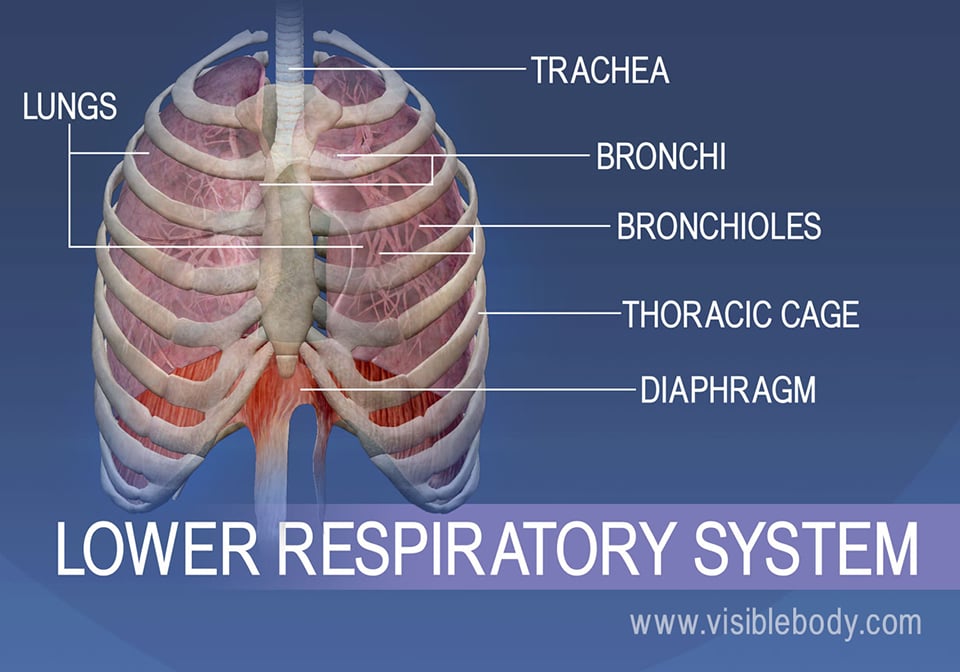





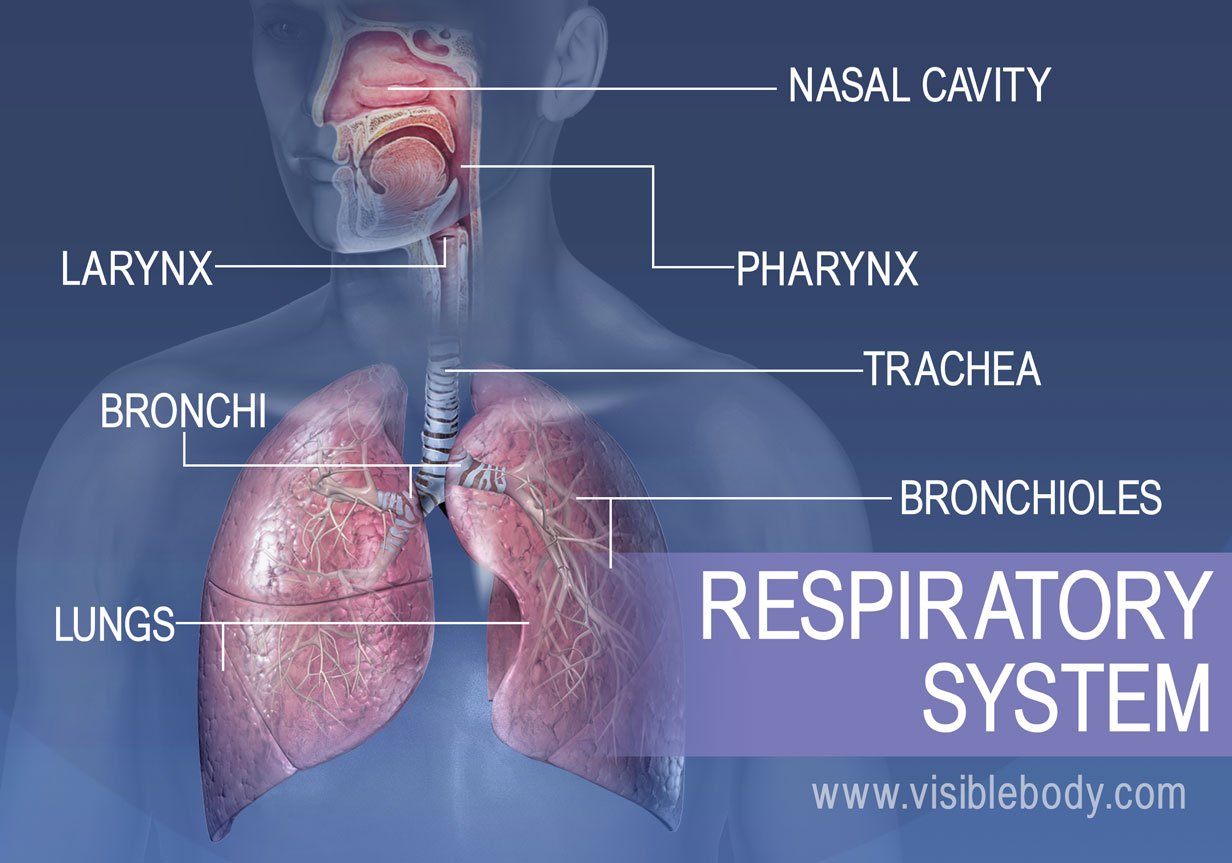

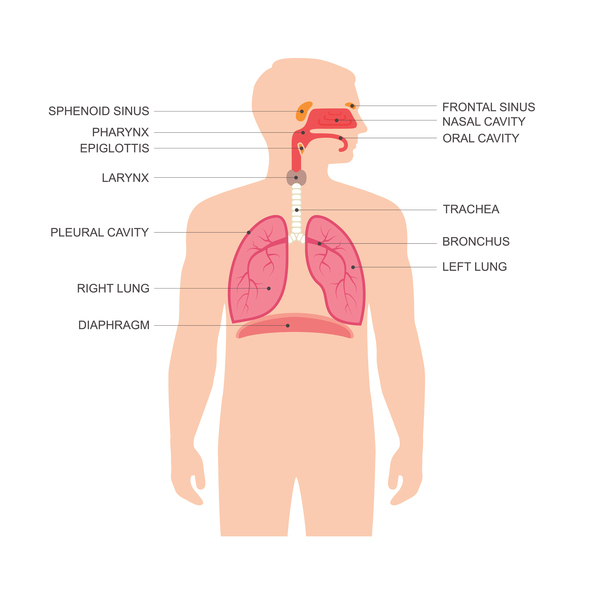
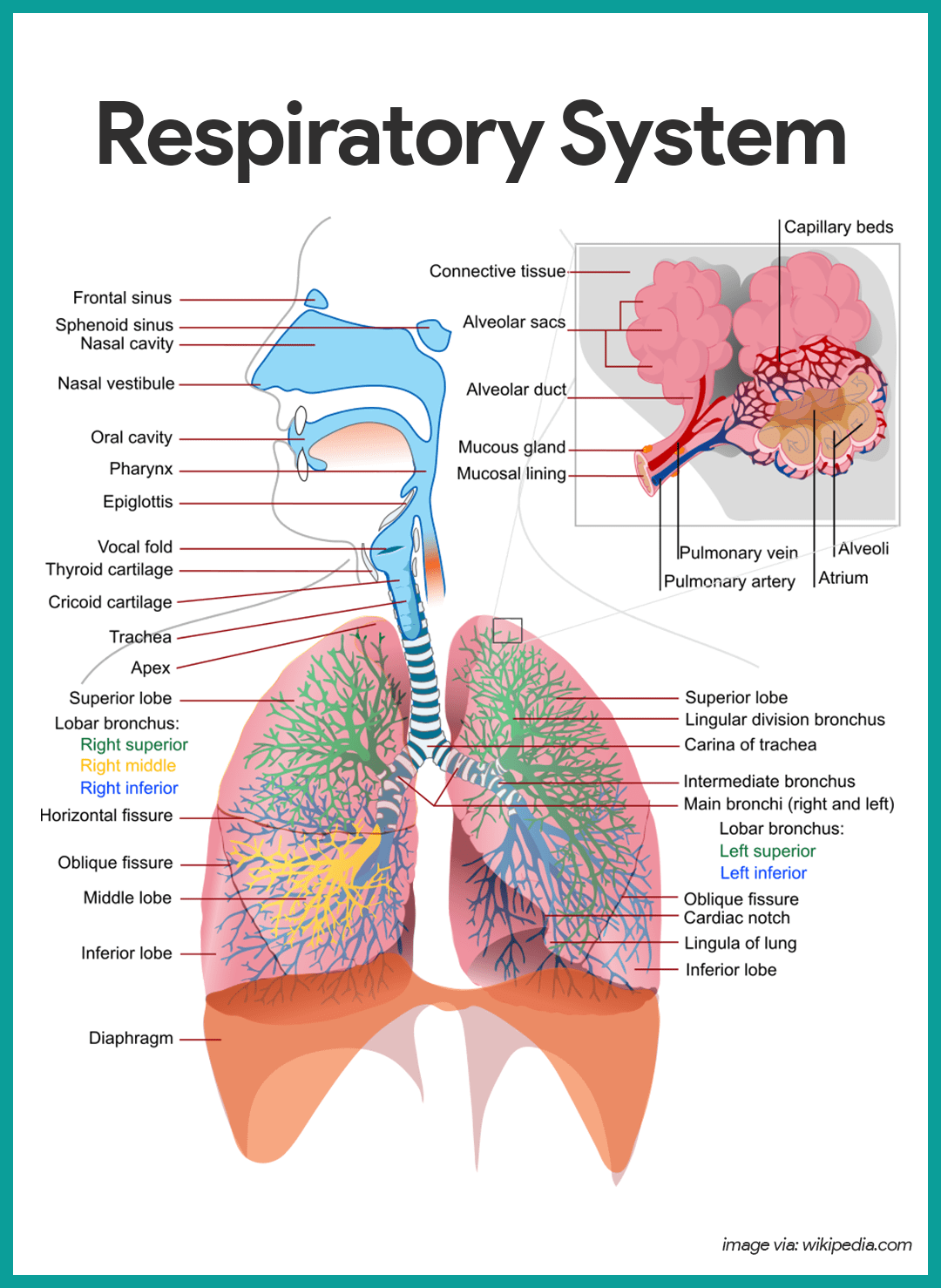


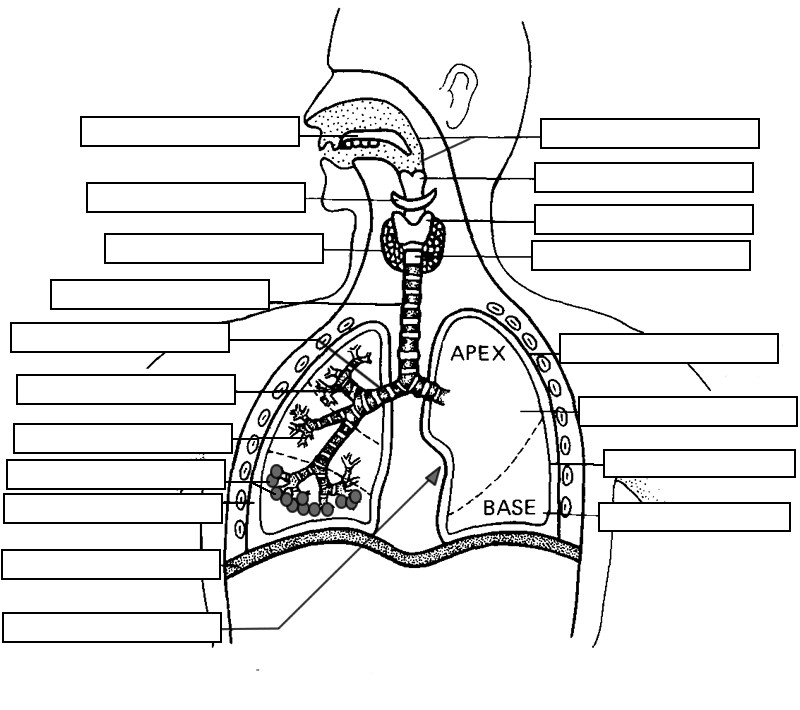


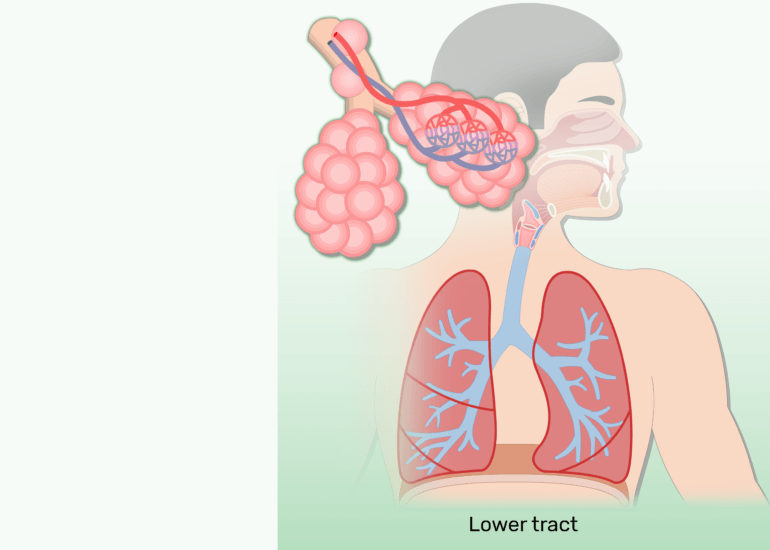


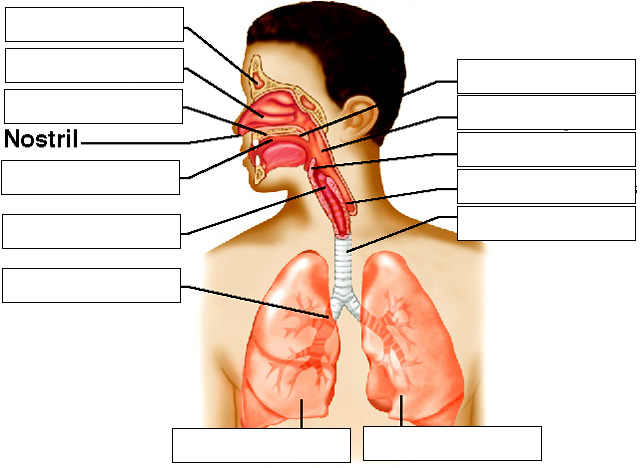



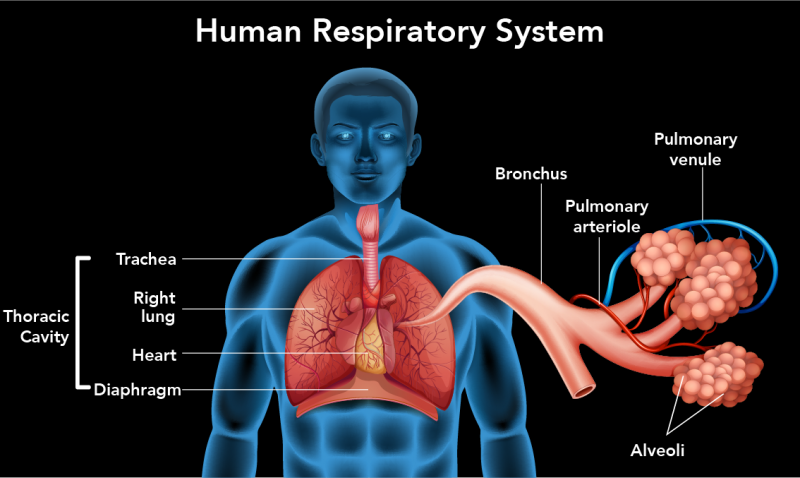

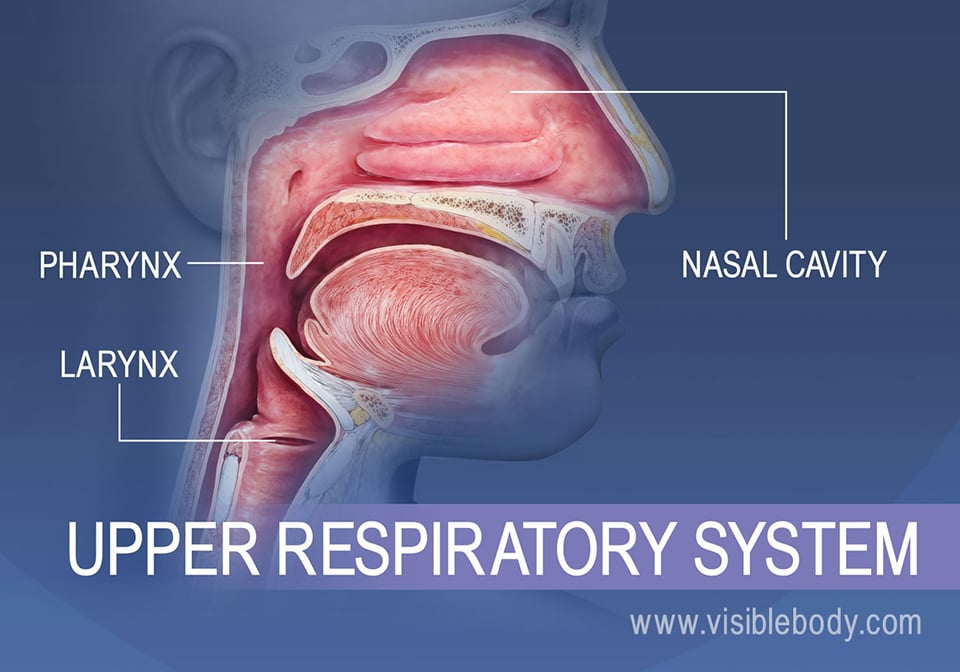
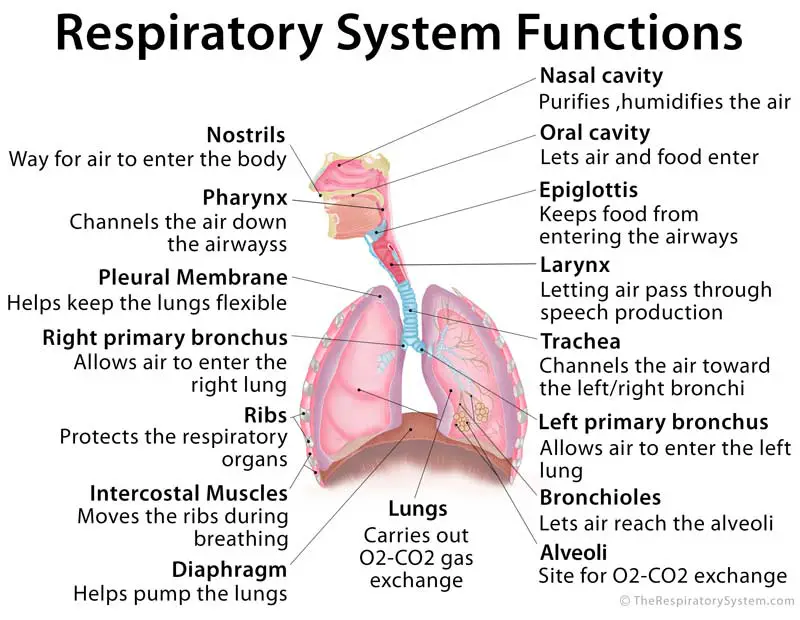

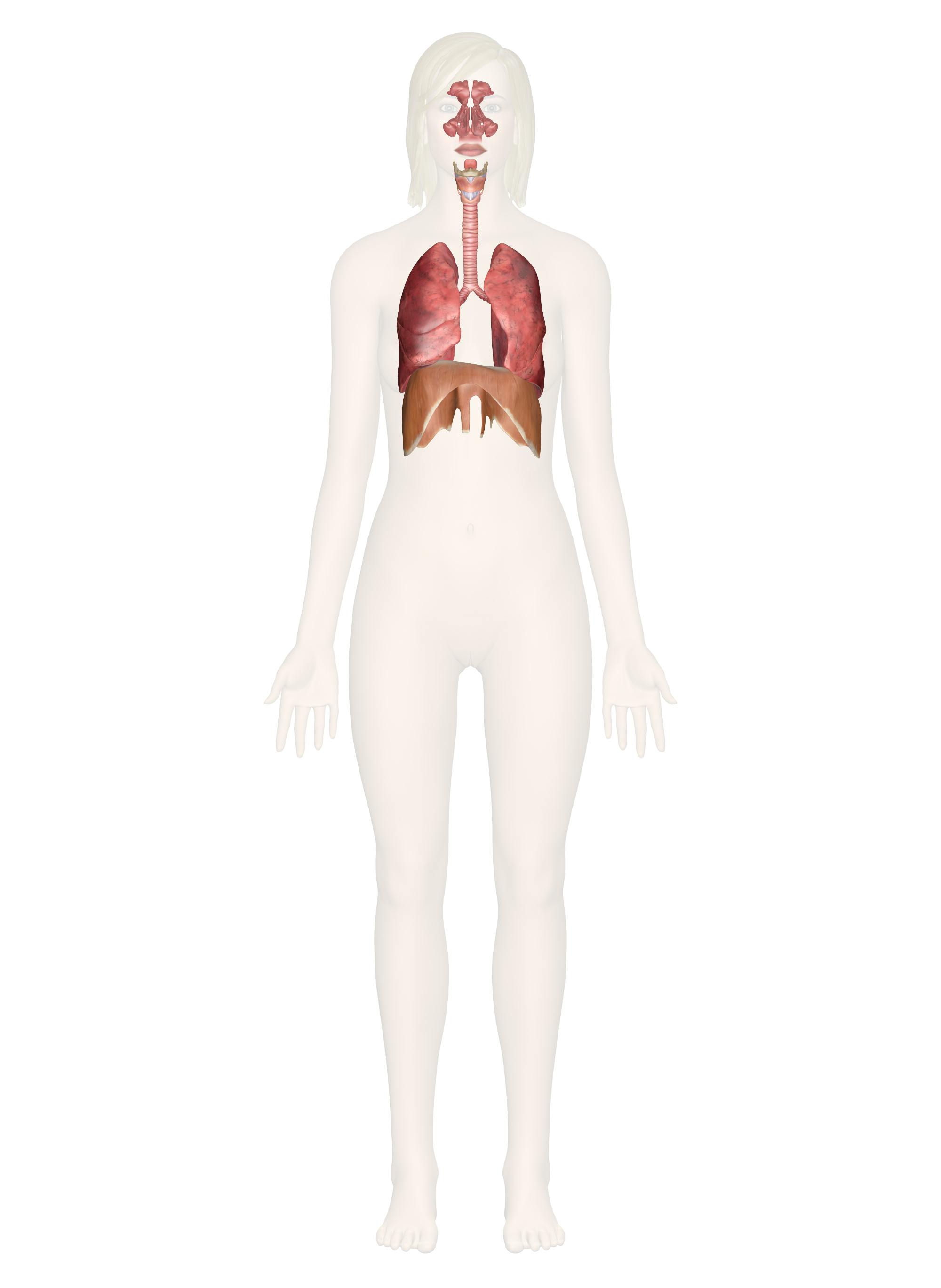
Post a Comment for "42 respiratory system with labels and functions"